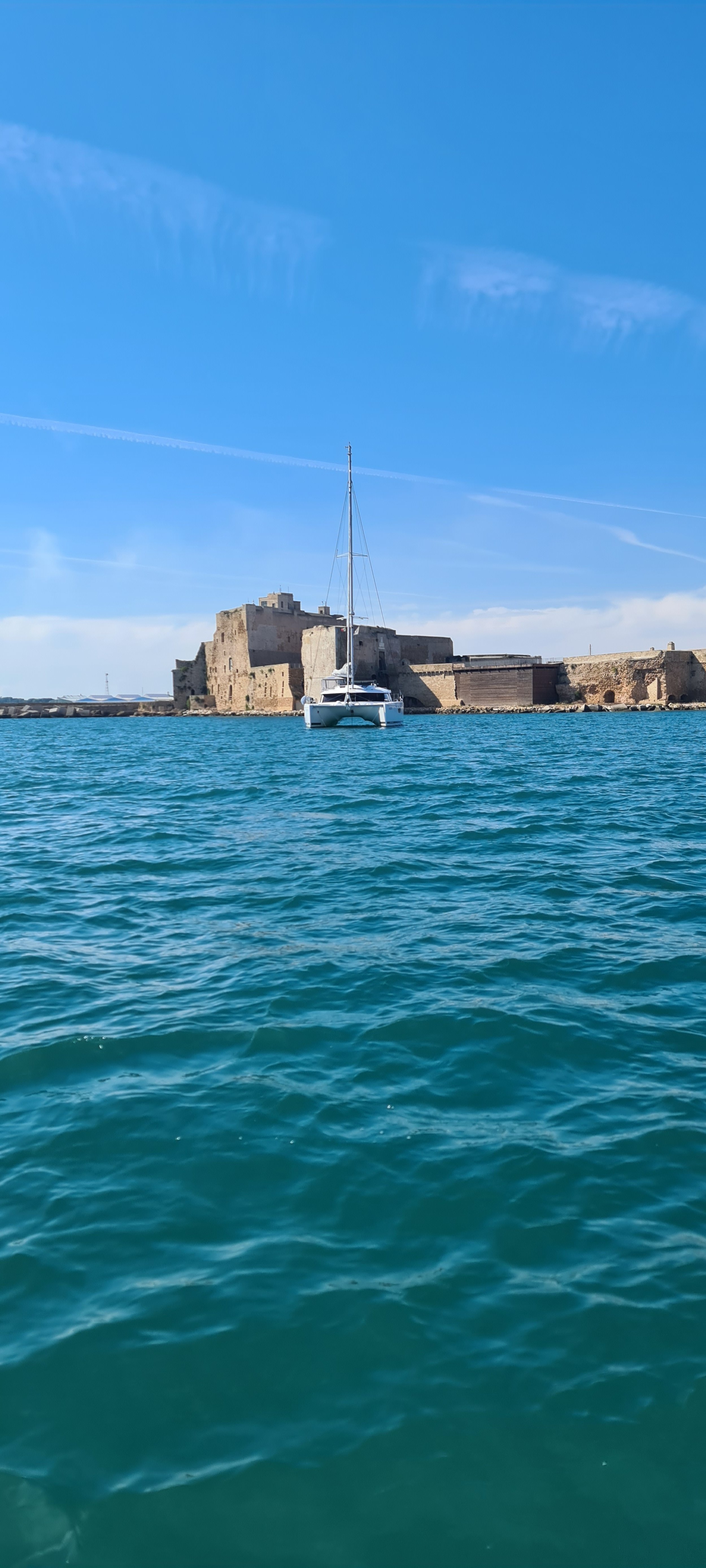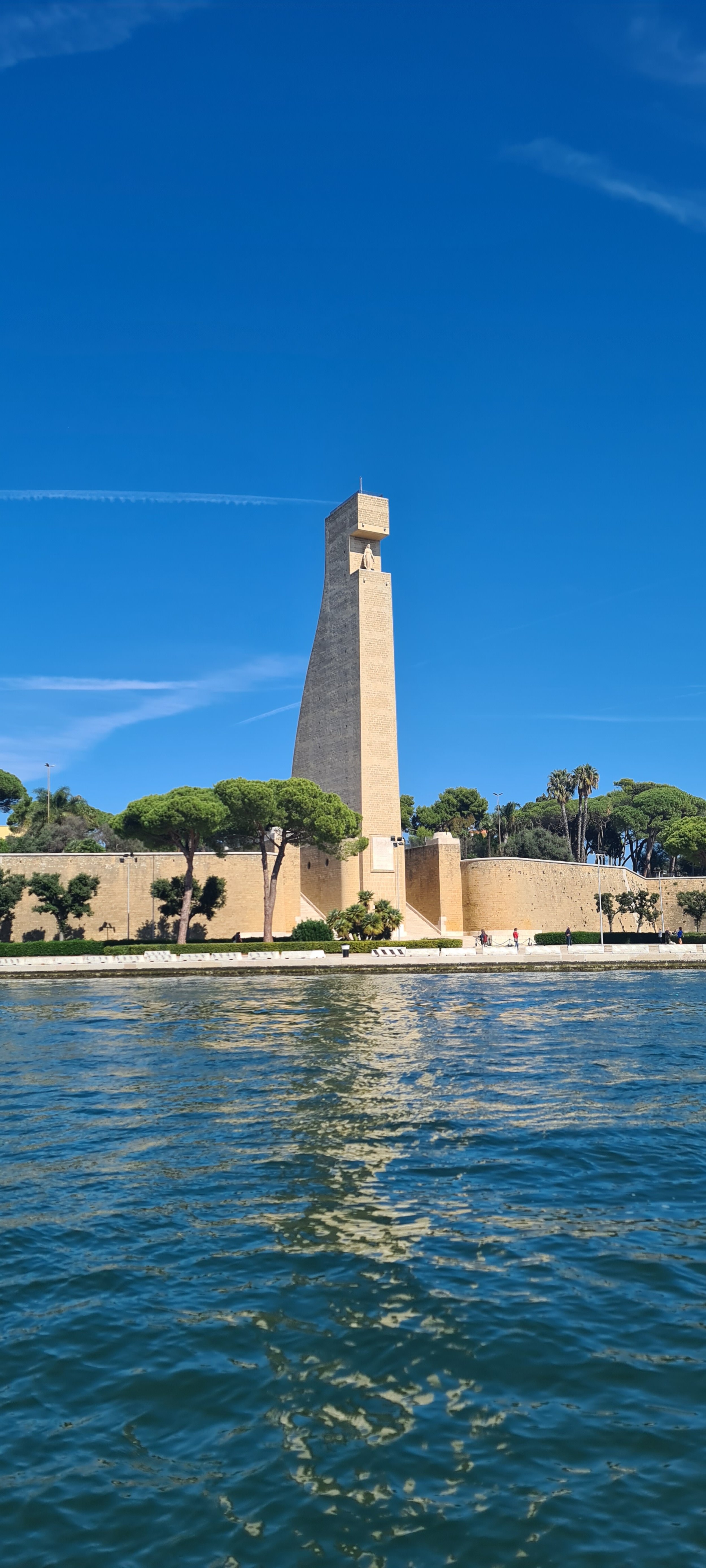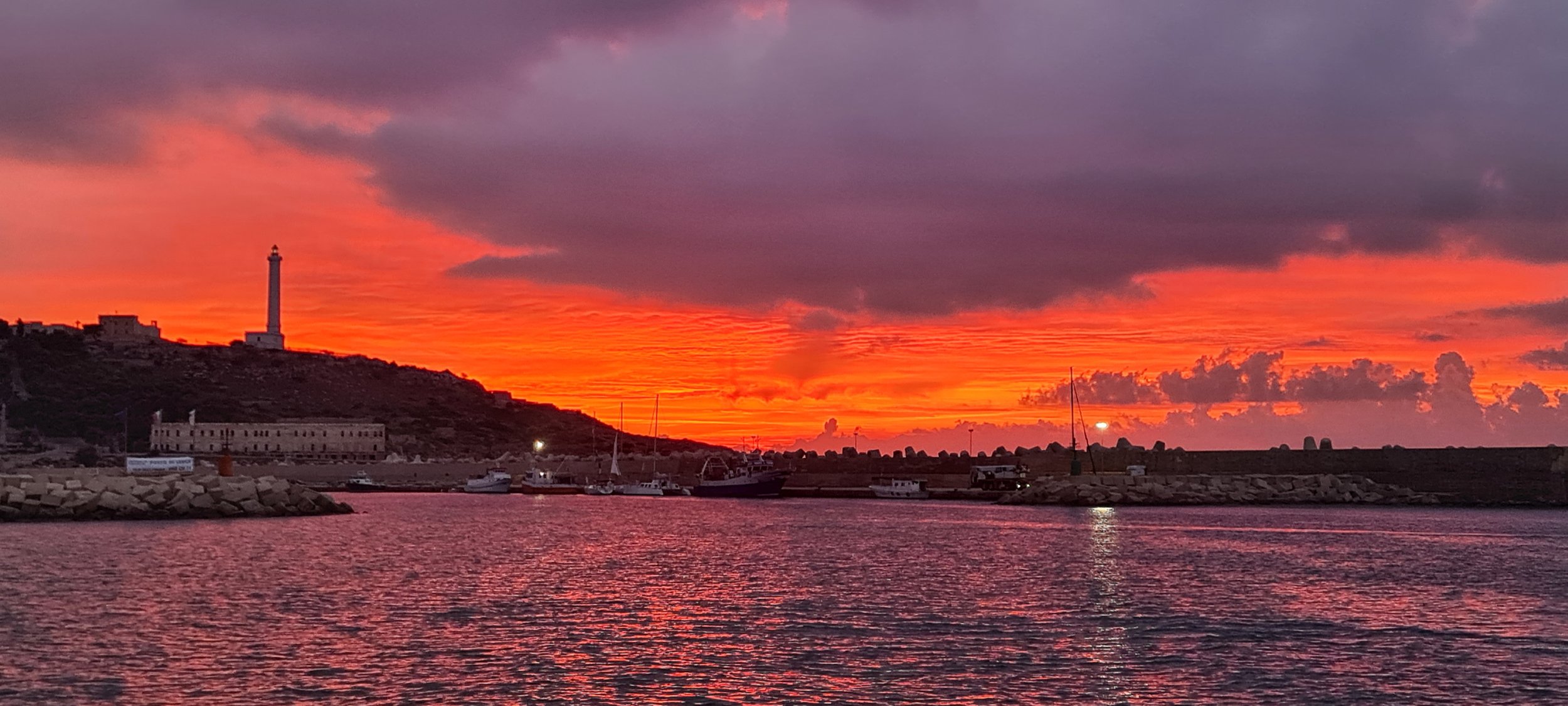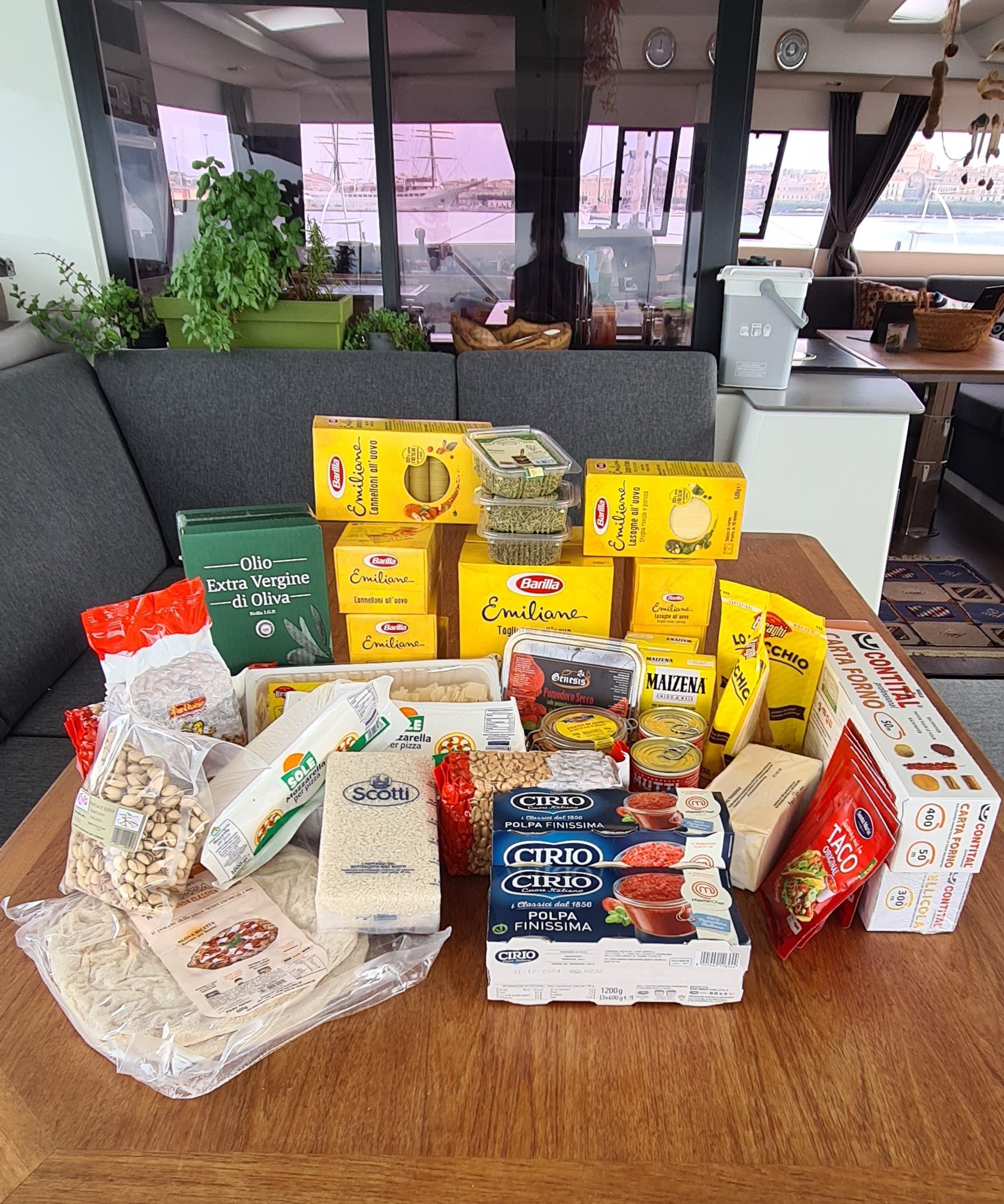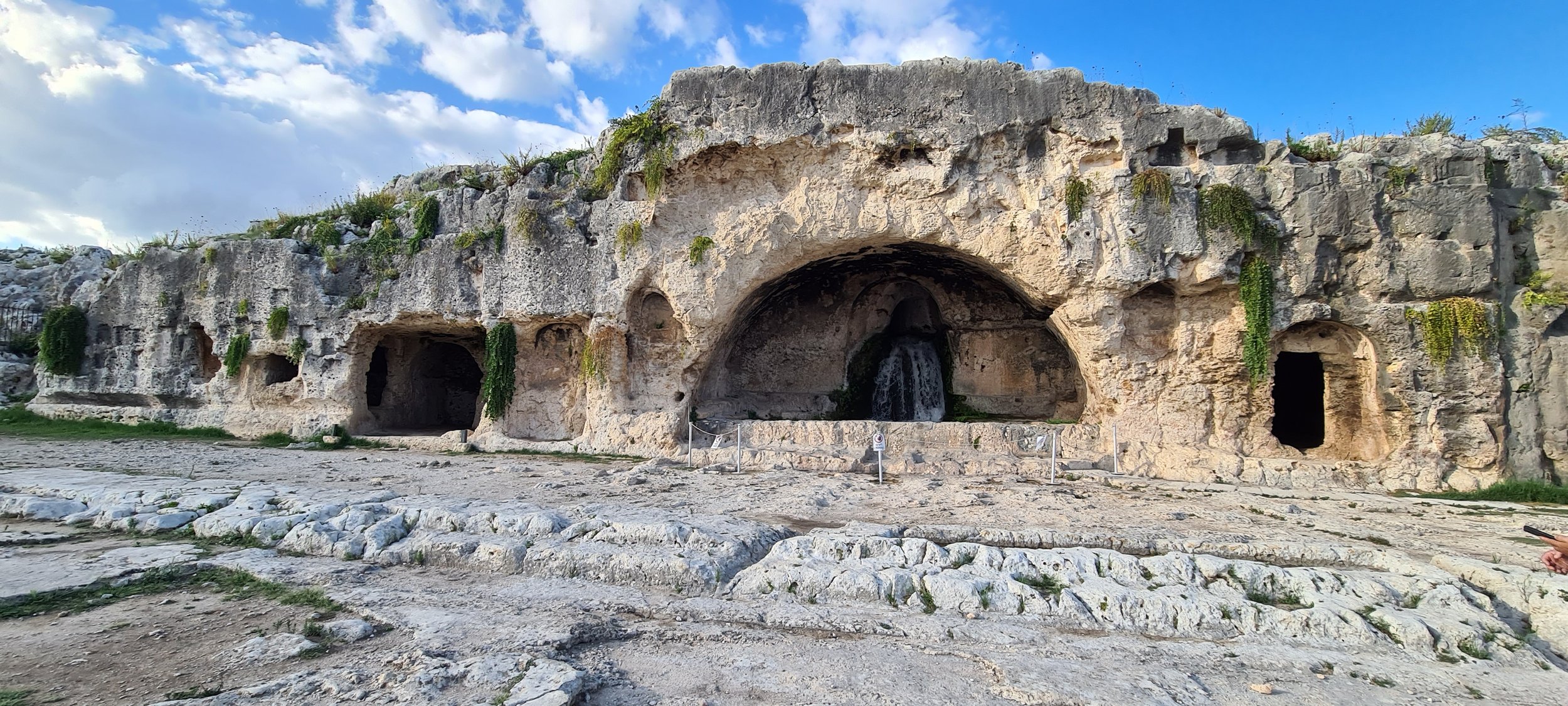Italy & Sicily
A calm and moonlit night with Jupiter and shooting stars for company, we crossed the Adriatic Sea to Italy, Skip and I spelling each other every three to five hours. Mid-morning arrival in big, brutal industrial Brindisi was unappealing, however we found a good anchorage in front of the 15th century Castello Alfonsino di Brindisi on Isola Forte a Mare which was slightly more picturesque as was the Monumento al Marinaio d'Italia, a 1933 rudder shaped monument to the 6,000 Italian sailors who fell during WW1. Checking into Italy and Schengen took about 30 mins once we had found the Border Police along the seafront to the left of the Roman Columns. Then four and a half hours down the coast, it wasn’t high on our agenda after spending 15 hours crossing the Adriatic, however once we had checked in there seemed no good reason to stay in Brindisi, and so pleased we did leave. Dodging Saturday fishermen, we arrived in Torre dell’Orso just as the light was fading, a lovely shallow sandy bay, crystal blue water and interesting tuff cliffs, chattering crows and nesting pigeons for company, much better.
The east coast of Italy from Brindisi down to Africo is long, sandy, and shallow with very few sheltered coves to tuck in to, but great holding, especially with an offshore breeze. The result of limestone geology, many rivers, and much silting; at one point we recorded a depth of 14 metres nearly a mile offshore.
We spent four days travelling down the coast, several of them ten hour days, and we didn’t go ashore as we had travelled this coastline in 2019 and were keen to get down to Malta, via Sicily. After Torre dell’Orso and a day of Sunday fishermen and limestone grottos, we anchored in Santa Maria di Leuca harbour with its seaside promenade of Art Nouveau and Moorish styled villas and the Mussolini Steps. Then it was up early with the rising sun and commercial fishermen to Crotone, smelly and industrial grey in the evening light but golden in the morning, the moon gazing down on locals using the gas rigs as FADs (fish aggregation devices). Last stop was Africo, where we anchored in six metres of sand 400 metres from shore and were kept awake by a side swell and a small commuter train, in retrospect we should have sailed past and overnighted to Sicily but would missed sighting the beautiful three masted Palinuro, an Italian Navy training barquentine.
Another ten hour day, calm hotness down to Sicily, we arrived in the late afternoon light - ancient Siricusa, birthplace of Archimedes, dilapidated, and beautiful. First day back was a wonderful day. Discovering that Bandiera, a bulk provisioning store that we had visited in 2019, was located just in front of our anchorage and then that the Greek-Roman city of Neopolis, now contained within Parco Archeologico della Neapolis was only a 30 minute hike across town and up a hill.
Access to Bandiera was across a wasteland, through a hole in a fence and a perfect start to our Atlantic provisioning with staples like pasta, canned tomatoes, mozzarella, wine and Martini Rosso. And with other large stores like supermarket Deco and hardware store Brico within walking distance we were able to make a good start. The only disappointment was our hunt for gas; we could not find anywhere to refill our gas bottle and the one chandlery who did have a supply was charging €90 for a new 3kg bottle! No gracias.
Neopolis was magnificent and made more dramatic by pouring rain and merging thunderstorms. Founded by the Greeks in 405 BC, the Teatro Greco (built in 470 BC with seating for 16,000 spectators) is spectacular, terraced tombs visible from NOETA and water still flowing from a fountain down to the stage. 3rd century BC Ara di Gerone II is a relatively uninteresting looking stone terrace but is the largest sacrificial altar ever found, apparently up to 450 oxen could be killed at one time, which actually doesn’t bear thinking about. The 2nd century AD Anfiteatro Roman, originally used for gladiatorial and horse events, still remains relatively intact despite the 16th century Spaniards using its stones to build Ortygia’s city walls. But the jewel in the park? The Latomia del Paradise (Paradise Quarry). A deep, steep limestone quarry, riddled with grottos and a subterranean garden planted with fruit trees and flowering shrubs. It is where the stone for ancient Neopolis was mined and also where the 7000 survivors of the war between Syracuse and Athens in 413 BC were imprisoned. Magnificent. But not, I suspect, for the prisoners of war or the slaves who mined the quarry.
Next day was another great day, the morning spent in Ortygia reuniting with friends Guilia and Claudia from Syrtaria and the afternoon revisiting Neopolis with Skip (the quarry photos I took had piqued his interest). I had happened upon Claudia and her daughter Guilia in 2019 when I had spied a beautiful dress in their shop window which featured a design I felt I had seen before, or something like it, while wandering the streets of Ortygia. Long story short it was indeed the street artist’s work and they arranged for me to meet Salvatore Accolla and his dog Regal in his small one room studio abode where I bought several of his paintings which I love to this day. Would they remember me? I walked into their shop and immediately there were hugs and tears all around, oh so heart-warming xx. Sadly Mr Accolla passed away last year, I would have liked to see him again
Siricusa is one of my favourite places, but it was time to keep moving…

